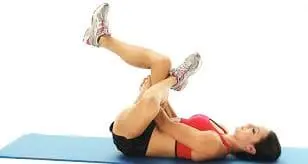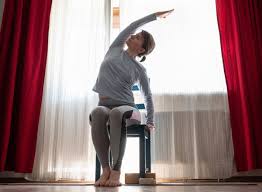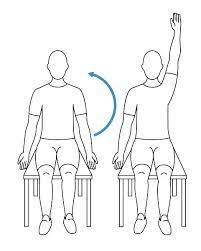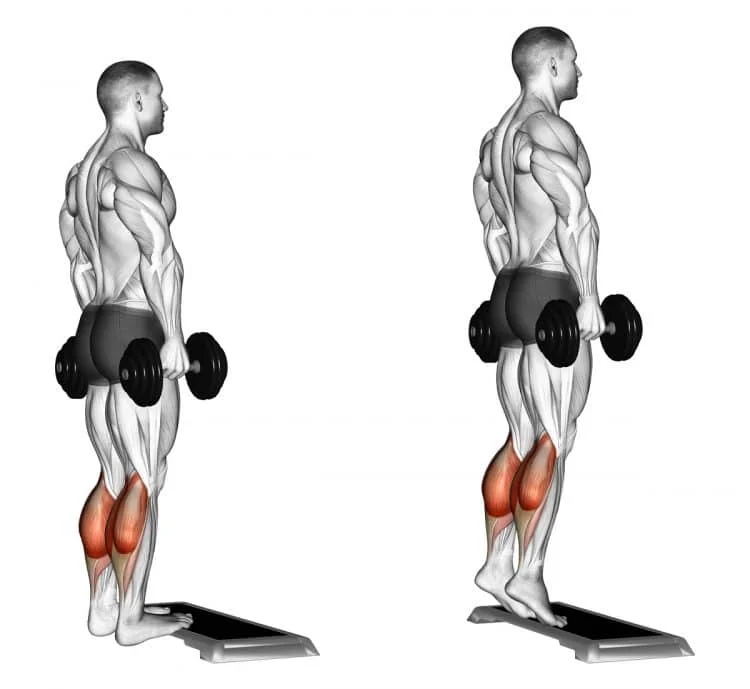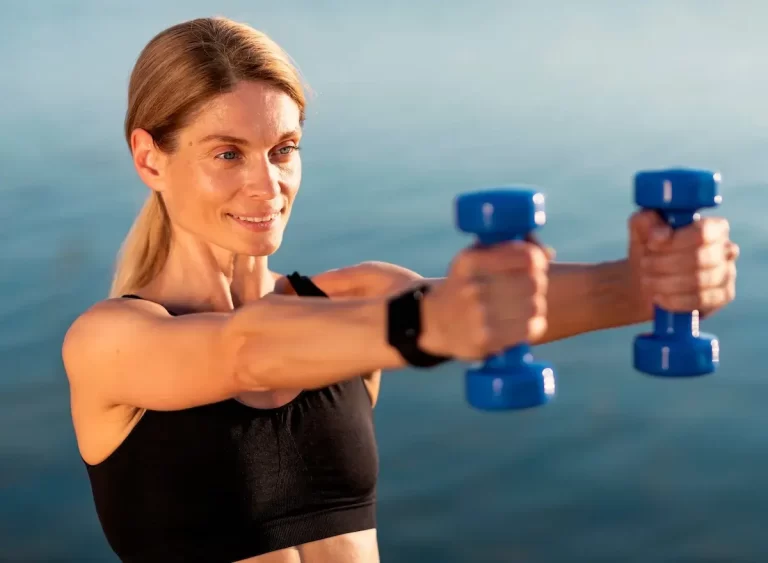14 Best Exercises for Piriformis Syndrome
Introduction:
Exercises for Piriformis Syndrome strengthen the hip muscles and improve the mobility of the piriformis muscle and surrounding hip muscles, which is important during piriformis syndrome. Stretching the piriformis improves muscular flexibility and reduces piriformis syndrome symptoms.
Pinching the sciatic nerve by the piriformis muscle results in piriformis syndrome, a neuromuscular disorder. The piriformis muscle, located around the head of the hip joint in the buttocks, is shaped like a flat band. The piriformis muscle is vital for rotations and is in control of all lower extremity or limb movement because it rises and rotates the thigh away from the body and stabilizes the hip joint.
Usually affecting one side of the body, piriformis syndrome flares up with extended periods of sitting and hip-moving exercises like walking, climbing stairs, or twisting. Firmly pressing on the affected buttock may also cause pain and tenderness.
In the buttocks, hip, or upper leg, piriformis syndrome can produce pain or numbness. The piriformis muscle pulls on the sciatic nerve, resulting in the symptoms of piriformis syndrome.
Causes:
Strains, tightness, and increases in volume or mass are the most common reasons why the piriformis muscle hurts.
- Overuse
Excessive usage of muscles, as in running, cycling, or lengthy durations of sitting, can result in piriformis syndrome. Muscle spasms and soreness can result from the piriformis muscle becoming strained and inflamed from repeated or prolonged use.
- Injury
Pain, edema, and spasms can result from the piriformis muscle becoming tight or inflamed following trauma to the hip or buttock region from a fall or direct injury. Instances of muscular imbalances or weakness, such as one leg being stronger or more flexible, can also result in strains or injuries to the muscle.
- Poor posture
Hip and pelvic muscular imbalances caused by incorrect posture can cause a strained or taut piriformis muscle. Bad posture is frequently linked to several factors, including imbalances, poor control, and weak muscles.
- Infection (pyomyositis)
In rare cases, a bacterial or fungal infection in the piriformis muscle or surrounding tissues might result in piriformis syndrome. Edema and fever are common additional signs of a Piriformis infection.
- Degenerative changes in the spine
Degenerative spinal abnormalities such as spinal stenosis or a herniated disc that aggravate or compress the sciatic nerve can eventually lead to sciatica. This may also result in soreness and inflammation in the piriformis muscle. These aging processes, trauma, and other underlying diseases like osteoarthritis may cause these degenerative alterations.
- Extended Sitting
Long-term sitting employment or hobbies can cause piriformis syndrome, especially if they are performed on hard surfaces or with insufficient support. This is a common practice among taxi drivers, cyclists, and office workers.
Signs and symptoms:
In the buttocks, hip, or upper leg, piriformis syndrome can produce pain or numbness. The piriformis muscle pulls on the sciatic nerve, resulting in the symptoms of piriformis syndrome.
- Hip or buttock Pain
In the buttocks, piriformis syndrome produces severe pain. An aching, burning, throbbing, or shooting pain may be used to describe the sensation. It frequently gets worse after engaging in physical activities like sitting, walking, running, cycling, or any other activity that requires repetitive motions of the hips and thighs. Long stretches of inactivity, like those experienced when driving or working a desk job, may also make the discomfort worse.
- Weakness or trouble using the affected leg
It could be difficult to elevate or move the leg in certain ways that would strain the piriformis muscle on the affected side, and it might feel heavy or stiff.
- A sensation of tingling and numbness along the leg and buttocks
The affected side’s thigh and leg may feel numb, and tingling or pins and needles may also happen. Prolonged periods of inactivity such as sitting or standing still can aggravate these feelings.
- Having trouble staying seated for long periods
Sitting for extended periods may be difficult due to buttock soreness and tenderness, especially on hard or uneven surfaces.
Risk factors:
The chance of piriformis syndrome developing may be raised by specific risk factors.
Several instances consist of;
- Athletes
Due to misuse of these muscles, athletes who play sports like basketball, tennis, and soccer or engage in other activities involving repetitive hip or thigh motions may be more affected by piriformis syndrome.
- Occupation
People in work where they must sit for extended periods, including truck drivers and office workers, may be more at risk for piriformis syndrome.
- Physical inactivity
Because piriformis syndrome is characterized by weakness and inflexibility in the hip and gluteal muscles, those who lead sedentary lifestyles and engage in little to no physical activity are more susceptible to the condition.
- Previous injury
If a previous hip or buttock injury doesn’t heal properly over time, it could result in piriformis syndrome. Two instances of these conditions involve falling and injuries to the body.
Exercises for Piriformis Syndrome:
Most piriformis syndrome workouts focus on strengthening the piriformis muscles in your lower back. Depending on the severity of the discomfort, easy stretching and strengthening exercises for the legs, hips, and back are typically involved in treating piriformis syndrome. After extensive examination, the physical therapist would often schedule this according to your body’s capabilities.
Bridging
- On your back, lie flat; bend both knees and place both feet flat on the ground.
- Keep your arms by your sides with your hands facing downward.
- Straighten your back and slowly lift your pelvis.
- Your upper body and shoulders should remain straight and planted.
- Hold this position for a few seconds.
- Lower the pelvis slowly and return to the ground, starting at the top of the spine.
- Once again, lower yourself into the spine until the back is flat against the floor.
- Then return to your neutral position.
- Then relax.
- Repeat this exercise five to ten times.
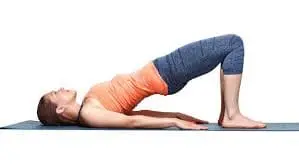
Prone leg raise
- Start with relaxing prone lying position on the ground.
- Your toe should be pointed as you straighten and raise your leg a few inches off the ground.
- Hold this position for a few seconds.
- Maintaining a straight knee, lower your leg to the floor.
- Then return to your neutral position.
- Then relax.
- Repeat this exercise five to ten times.

Side-lying Hip Abduction
- Laying on the unaffected side, place your lower hand beneath your head to begin.
- Pose with your hips aligned straight and your lower leg bowed.
- Raise your upper leg and maintain its straight posture until it reaches its maximum range of motion.
- Hold this position for a few seconds.
- Then, slowly go down, being mindful of your lowering motion.
- Then return to your neutral position.
- Then relax.
- Repeat this exercise five to ten times.
- Perform on the other side after switching sides.
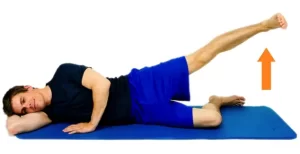
Knee-to-shoulder piriformis stretch
- Assume a supine position, bending one knee and crossing the other over the opposing knee.
- Pull your knee across your body in the direction of your other shoulder until you start to feel stretched.
- Feeling your piriformis release, progressively bending your knee further.
- Hold this position for a few seconds.
- Then return to your neutral position.
- Then relax.
- Repeat this exercise five to ten times.
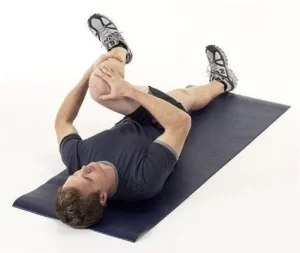
Seated piriformis stretch
- Sitting on a chair, both feet should be flat on the floor.
- Raise your right ankle and lay it across your left knee.
- Following that, flex your right foot by bringing the toes nearly to your shin while keeping your back to the chair.
- While bending the chest forward toward the knees, maintain a straight spine.
- Bend forward to the point where you feel stretched but not uncomfortable.
- Hold this position for a few seconds.
- Then return to your neutral position.
- Then relax.
- Repeat this exercise five to ten times.
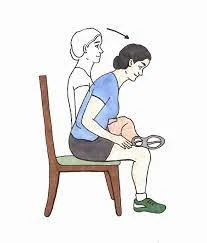
Clamshell
- To start, you lie on your side.
- From a left-side laying position, bend your elbow.
- With your left hand, elevate the support to your head next.
- After positioning your right foot and leg on top of your left, flex your knees to a 45-degree position.
- To maintain balance, gently plant your right hand on your hip or the ground in front of you.
- Keep your feet close to your upper body as you next gently elevate your right knee toward the sky.
- Hold this position for a few seconds.
- Keep your core firmly in place as you reposition your lower right leg toward your left.
- Then return to your neutral position.
- Then relax.
- Repeat this exercise five to ten times.
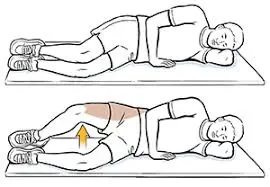
Seated foot stretch
- Place one leg out in front of you while sitting on the edge of a chair with your heel on the floor.
- Bend forward at the hips to go down to the ground.
- Hold this position for a few seconds.
- Then return to your neutral position.
- Then relax.
- Repeat this exercise five to ten times.
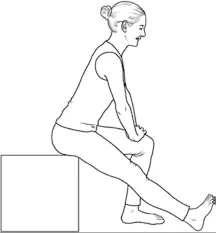
Standing Piriformis Stretch
- Position the painful leg over the knee of your other leg while you are standing.
- That ought to form figure four.
- Your hips ought to fall to the floor at a 45-degree angle.
- As necessary, bend the leg that you are standing on.
- Hold your spine straight as you bend forward at the waist and extend your arms to the ground.
- Hold this position for a few seconds.
- Then return to your neutral position.
- Then relax.
- Repeat this exercise five to ten times.
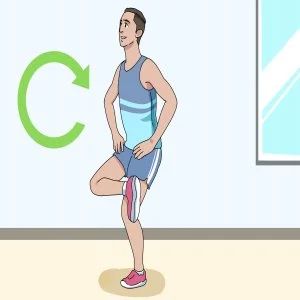
Foam roller Glute and Piriformis Stretch
- Position the roller in the center of your glutes while seated on the floor.
- Make quick, flowing back-and-forth rolling with the roller for a few seconds.
- To ensure that you are touching every part of the muscle, shift positions.
- By staying motionless for five seconds, you can provide an active release to particular tight places.
- Then return to your neutral position.
- Then relax.
- Repeat this exercise five to ten times.
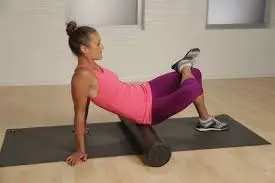
Supine Piriformis Stretch
- With one leg bent, lie on your back.
- In a figure-four position, place the ankle of the opposing leg over the knee.
- Grip the back of the knee and the ankle with both hands.
- When the buttocks of the extended leg start to stretch, gently draw the knee toward your chest.
- Hold this position for a few seconds.
- Then return to your neutral position.
- Then relax.
- Repeat this exercise five to ten times.

Hip flexor stretch
- You should bend at the knee with one foot flat on the floor in front of you.
- Till the front of the kneeling leg’s hip begins to extend, slowly move your weight forward.
- Avoid hunching your lower back by maintaining a straight spine.
- Hold this position for a few seconds.
- Then return to your neutral position.
- Then relax.
- Repeat this exercise five to ten times.
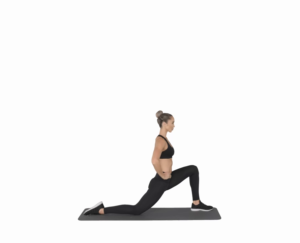
Seated spinal twist
- Stretch your legs out in front of you while sitting erect on the ground.
- Fold your right leg over your left, bending at the knee.
- On the ground, place your right foot in front of your left leg.
- With your back to the floor, place your right hand straight.
- Reposition your elbow on the outside of your right knee while twisting your body to the right.
- Holding your head over your right shoulder, keep rotating to the right.
- Hold this position for a few seconds.
- Then return to your neutral position.
- Then relax.
- Repeat this exercise five to ten times.
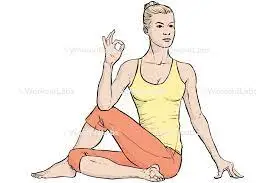
Pigeon pose
- Put yourself on a yoga mat in the downward dog pose, pressing your hands and feet into the mat.
- After kicking it back and sweeping it forward, angle your right knee so that it rests close to your right hand on the mat.
- Your right ankle should be near your left hand while your shin is positioned horizontally or parallel to the front of your mat.
- Stretch your left leg out behind you while keeping your shin and front of your left thigh flat on the mat.
- Lean forward onto your right leg and extend at the hips without bending your back to make the stretch more intense.
- Hold this position for a few seconds.
- Then return to your neutral position.
- Then relax.
- Repeat this exercise five to ten times.
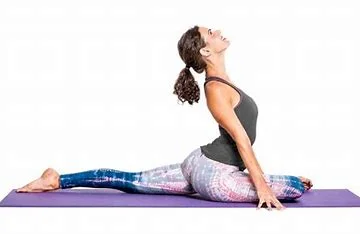
Standing hamstring stretch
- Your affected leg must be placed over the tiny stool to perform a hamstring stretch while standing.
- Now straighten your knee.
- Start from your hips and bend forward.
- Your thighs and back are a little stretched.
- Hold this position for a few seconds.
- Then return to your neutral position.
- Then relax.
- Repeat this exercise five to ten times.
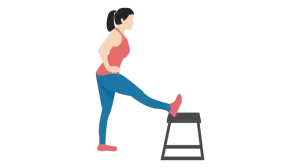
What security precautions should I take before working out?
- Straighten your posture when exercising.
- Usually, warm up and stretch before beginning any workout.
- When exercising, try not to go too fast or too hard.
- Refrain from engaging in stressful activities.
- Wear loose, comfortable attire during your workout to help increase your range of motion and promote relaxation. Avoid wearing clothing that is too tight or trendy.
- Between your exercises, give yourself a rest.
- Use gentle stretching and bending movements.
- Although difficult, stretching the muscles in your tense joints is natural. Stretching and exercising shouldn’t hurt or make you feel like someone is stabbing you because they are unhealthy for you and exacerbate your problem.
- Stretches should be performed according to protocol before and after sets and for the recommended amount of repetitions for each exercise.
- Keep yourself hydrated.
- Stopping exercise as soon as the pain becomes severe is advised.
- Make sure that whatever equipment you use is properly installed.
What time will you quit exercising?
- Fever
- Severe muscular burning
- Whether there’s pain or numbness present
- If you get pain during exercising, stop.
- Headache
How can Piriformis Syndrome be prevented?
It is important to make beneficial habits and lifestyle choices that support proper muscle balance, flexibility, and general musculoskeletal health to prevent Piriformis Syndrome.
Here are some suggestions to lower your chance of getting Piriformis Syndrome;
- Keep your body mechanics correct
Use correct body mechanics when lifting heavy objects or performing activities that need twisting and bending. Stay away from sudden or forceful movements and lift with your legs while keeping your back straight to avoid straining your muscles.
- Pay attention to your body
When engaging in physical activity, be aware of any indicators of pain or discomfort and adjust your routine accordingly. Refrain from pushing through pain since this may aggravate pre-existing conditions and result in overuse injuries.
- Stay hydrated
Drink enough water throughout the day to keep your muscles hydrated and maintain optimal tissue function. Dehydration can cause cramping and tightness in the muscles, which increases the risk of injury.
- Maintain proper posture
Reducing tension on the lower back and pelvis can be achieved by maintaining proper posture when standing, sitting, and performing tasks.
- Maintain a stretching routine
Stretching regularly will help you become more flexible and loosen up your muscles. Stretches for the piriformis muscle, hamstrings, lower back, and hip flexors should be your main focus.
- Engage in regular exercise
Exercise daily to build strength in the muscles surrounding your lower back, pelvis, and hips. Include exercises that promote stability and support, targeting the hip abductors, glutes, and core muscles.
- Maintain a healthy weight
In particular, the lower back and pelvis will experience less strain if you maintain a healthy body weight. Excessive weight gain can cause musculoskeletal abnormalities and increase the risk of Piriformis Syndrome.
If you have piriformis syndrome, you should avoid the following positions and exercises:
- To relieve pressure on your piriformis if you sit at work, doctors advise getting up for a short while every 30 minutes. A standing desk is perfect in situations like these. It has a very good ergonomic design for people who use computers all day.
- Don’t do intense weightlifting exercises.
- Long durations of sitting should be avoided since this puts strain on the piriformis muscle and sciatic nerve. Avoid doing sitting workouts like cycling as well, as these can make your problem worse.
Summary:
The deep-seated piriformis muscle spasms that cause buttock pain are a possible symptom of piriformis syndrome. Exercises that focus on increasing the flexibility and strength of the piriformis muscle are part of physical therapy for piriformis syndrome, in addition to strengthening the pelvic, trunk, and core muscles.
Exercises that strengthen the piriformis muscle can lessen the pain associated with it and also stop symptoms from returning. Through improved hip, thigh, and leg muscular balance and alignment, strengthening exercises reduce the strain on the piriformis muscle and prevent it from getting tight or spasming. The ideal mechanical force distribution during exercise is also made possible by stronger and more evenly distributed muscles.
FAQ:
Is it possible to recover from piriformis syndrome permanently?
Piriformis syndrome is typically easily treated if it is correctly recognized by a doctor, though some people may experience initial symptoms or persistent discomfort. Ice packs, exercise, changing activities, stretching, and following an effective rehabilitation home program can all help avoid piriformis syndrome.
Regarding piriformis pain, how do you sit?
Utilize a cushion or pillow for back support.
In addition to a cushion on your seat that helps distribute your weight evenly so you do not put greater pressure on one side, a back support can assist you in maintaining a pain-free posture by maintaining your spine in its natural alignment or position.
Does walking help with piriformis?
Walking can help relieve sciatic pain and piriformis syndrome pain, increase back and spine mobility, release endorphins, support your body’s natural healing processes, and help you maintain good posture throughout your body. Walking can also be a very significant or crucial element of your recovery.
Which exercise is most beneficial for piriformis syndrome?
Bridge
Side leg lifts
Clamshell
Prone leg raise
How quickly can piriformis condition be treated?
Stretching exercises, massages, and pain and swelling medications are some possible treatments. You might receive an injection of steroid medication if these don’t work. You might need to restrict activities like jogging and rest the affected muscle until the pain decreases.
When I have piriformis syndrome, which exercises should I avoid?
Stay away from painful exercises like running or biking. Once the pain slows down, you can resume these activities. Make sure you’re utilizing the proper form and equipment when engaging in sports or other physical activity.
Why does piriformis syndrome get worse?
Incorrect lifting results in piriformis muscle damage. not effectively stretching after exercise or warming up before it. exerting too much or engaging in repetitive sports like long-distance running. significant periods of time spent sitting.
Could piriformis be cured?
A physical therapist can be of great help in expediting the healing phase of piriformis syndrome. Physical therapy employs techniques including electrical stimulation, ultrasound, cupping, and dry needling in addition to other modalities that help identify the actual cause of your pain.
References:
- A. Patel, MD (n.d.). Treatment with strengthening exercises and piriformis muscle stretching. The website Spine-Health provides information on sciatica, including a stretch and physical treatment for the piriformis muscle.
- Pietro Tirgar (2023c), December 13. Mobile Physiotherapy The clinic: The Most Effective 12 Activities for Piriformis Syndrome. 12 of the best exercises for Piriformis Syndrome can be found at https://mobilephysiotherapyclinic.in.
- Prajapati, D. ( April 11, 2023a). The Top 7 Activities for Piriformis Syndrome. For the best exercises for Piriformis Syndrome, visit https://samarpanphysioclinic.com. Exercises that are best for Piriformis Syndrome: https://samarpanphysioclinic.com/
- May 1, 2021: Sharma, V. The symptoms, causes, available treatments, and more of piriformis syndrome. Max Healthcare. https://www.maxhealthcare.in/blogs/causes-symptoms-treatment-of-piriformis-syndrome
- Physio, S. (1985a–1985f). Five of the best Piriformis Syndrome Exercises from Surrey Physiotherapy. Surrey Physical Therapy. piriformis syndrome exercises: https://www.surreyphysio.co.uk/top-5/top-5-exercises
- Brahmbhatt, A. ( March 29, 2022). The Top Exercises To Treat Piriformis Strain | Physiotattva. Here are some exercises for sciatica, hip pain, and back pain related to Piriformis syndrome. Piriformis Syndrome Exercises for Sciatica, Hip Pain, and Back Pain: The website physiotattva.com/blog
- Image 9, 2018 June 23; Renderer, A. Exercises Using Foam Rollers for Runners. Popsugar.com/Fitness/Foam-Rolling-Exercises-for-Runners-29493356

